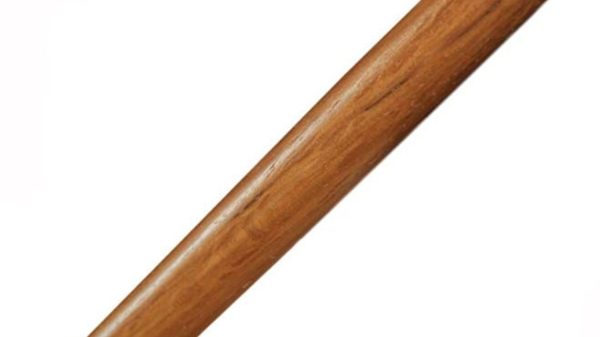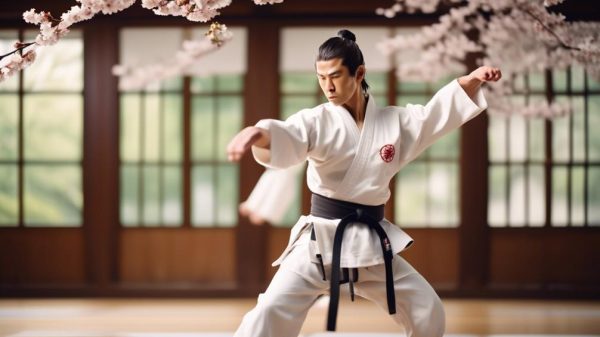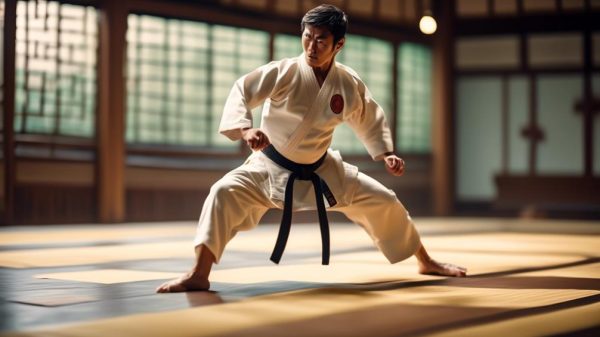Brazilian Jiu-Jitsu’s intricate techniques and endless combinations overwhelm beginners on where to start.
While foundations like shrimping, framing and breaking closed guards are essential, they often lack flair that captures interest long-term.
This article showcases 5 high percentage submission moves that white belts should focus reps on to develop core grappling intuition faster, progress smoothly and have more fun rolling.
The highlighted chokes, joint locks and sweeps prove broadly applicable across positions like guard, mount and side control against common reactions.
The moves largely avoid reliance on brute strength or athleticism. Instead they exemplify concepts like off-balancing, isolation and incremental advancement through proper angles and leverage. Video supplements step-by-step details.
Practicing armbars, triangle chokes, kimuras, cross collar chokes and hip bump sweeps ingrain the nuances that skilled practitioners utilize to create openings.
They provide a solid foundation to build more techniques upon.
Master these fundamental subs and you’ll advance into blue belt territory equipped with proven tools to threaten higher ranks as well.
Before beginning working on these moves, always be sure to do your BJJ warmup drills.
#5: Hip Bump Sweep
The hip bump sweep serves as an excellent foundational sweep, particularly effective for no-gi grappling from open guards.
With a cross collar or wrist control to block forward posture, the bottom grappler swims their opposite side knee in tightly while bending the other leg base.
Sharply bridging the posted leg diagonally, the sweeper hip thrusts upwards while pulling opponent’s weight down and past overhead.
The attacking combatant rolls through, establishing top position.
Alternatively, the sweep may expose the opponent’s back for taking. Chaining bump attempts together builds openings.
The hip bump sweep relies on disruption of top pressure through head and grip control, then urgent angled hip displacement. Drill bridging power needed to overcome larger foes.
Sweep right to left and vice versa until movements feel natural. As a core open guard sweep, a dependable hip bump frustrates opponents while allowing guardsmen to dictate the engagement.
#4: Cross Collar Choke from Mount
A fundamental gi choke, the cross collar choke from mount applies immense top pressure using the lapel against the neck for asphyxiation.
Establish robust mount control, pinning arms with knees and stripping posture low. Reach across to grip deep collars near the shoulder with both hands.
Position one elbow pointing downwards near their chin, with your bicep and palm reinforcing the choking side’s grip.
Pivot leading forward, squeezing the grips in sequence to tighten while limiting air.
Alternate arms if needed, continually re-gripping to burn through grasp attempts until opponent taps.
Attacks must stay composed within closed guard if defenses dislodge the mount. Control posture through each transition before resetting across the throat.
Against stubborn opponents, distract them during grip adjustment and hide hand positioning to conceal the pending choke. Dial in choke accuracy over speed.
#3: Triangle Choke
The triangle choke serves as an iconic submission that white belts should master from guard and during transitional openings.
Set up the triangle by first off-balancing their posture using an arm drag or overhead break. Maintain control of the chosen attack side’s wrist through each step.
Bring your ankle in front of your shin, securing the head and arm enclosed tightly while squeezing knees together.
Support the squeeze with your foot hooked behind the knee. Shift angles until straight legs fully lock the airway.
Apply choking pressure by driving hips skyward until they tap.
Drill triangle accuracy repeatedly from both sides before adding speed. If caught mid-attempt, retain guard control and elbow position to stand up into the sub.
Let them turn inward if locked correctly. Combining the triangle with an armbar forces opponents to concede one or the other.
#2: Kimura Lock
Commonly called the “Kimura” after Masahiko Kimura defeated legend Helio Gracie with the hold, this bent armlock proves highly effective for BJJ white belts to practice.
Apply the submission from top positions and guard passes or even against standing opponents.
Grip the wrist and isolate the arm, then clasp hands using a figure four hold. Keep your thumb pointed upwards and lead hand positioned near the elbow.
Lift the limb up while stepping over and turning inwards. Raise the elbow further by pulling the arm away from their torso.
Add pressure against the shoulder, driving it downwards for the necessary leverage. Descend hips following their reactions until the tap.
If caught midway, retain control backing out carefully before reattempting smarter set ups that don’t telegraph intentions.
#1: Armbar
The armbar stands as likely the most iconic submission in BJJ, notorious for elbow hyperextension if not tapped to.
But white belts shouldn’t rely on cranking brute strength in applies. Instead set up armbars through precise leverage placement.
Isolate an arm, break grips then lift hips tall to pinch their head tight between knees. Keep their wrist controlled, fully extending legs to shape their arm vertically.
Position it centrally on the stomach with elbow at 90 degrees. Fall to the side with hips to incrementally straighten.
Where their arm straightens past normal range, apply downward pressure with both hands reinforcing the elbow joint.
Ease into the hyperextension while staying square and reducing space to escape. If caught midway, defend counters before recomposing dominant position to retry.
The fundamental chokes, joint locks and sweeps covered offer beginners high percentage techniques deeply ingrained into Brazilian Jiu-Jitsu curriculum.
Though only scratching the surface of a vastly comprehensive grappling art, these core moves build intuition to expand upon.
Repetitive drilling cements proper setups, leverage advantage recognition and finishing mechanics.
Precision comes before speed in rehearsals – ensure training partners can safely tap before attempting submissions at intensity.
Record attempts to self-scrutinize areas needing refinement.
While foundational BJJ relies on sound posture, positioning and principles, these locks and chokes provide reliable weapons even as a white belt.
They open doors to take matches against resistant opponents of any size once mastered.
Revisit these moves often as the foundations of your personalized fight strategy.









